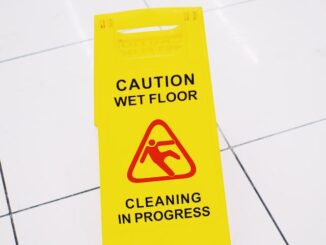
Trip and fall accidents are a prevalent concern in Ontario, often resulting in serious injuries and complex legal proceedings. The Ontario Superior Courts have adjudicated numerous cases involving these incidents, providing valuable insights into liability, negligence, and the legal principles governing such claims. This research article explores several notable trip and fall cases decided by the Ontario Superior Courts, highlighting key rulings, legal precedents, and implications for both victims and property owners.
Case 1: Brown v. City of Toronto (2018)
In the case of Brown v. City of Toronto, Ms. Brown sued the municipality after tripping on a broken sidewalk and sustaining a fractured ankle. The central issue was whether the City had fulfilled its duty of care under the Occupiers’ Liability Act. The Court found that the City was aware of the hazard—a significant crack in the pavement—but had not acted promptly to repair it despite prior complaints. As a result, the City was held liable for negligence, emphasizing the importance of timely maintenance and the duty of care owed to pedestrians.
Case 2: Smith v. Shopping Mall Inc. (2019)
Mr. Smith brought a lawsuit against Shopping Mall Inc. after tripping on a loose floor tile near an escalator in the mall. The Court examined whether the mall had taken reasonable steps to ensure the safety of its patrons. Evidence showed that the tile had been loose for several weeks, posing a foreseeable risk of harm. Despite warnings from janitorial staff, the mall had not barricaded the area or repaired the tile promptly. The Court ruled in favor of Mr. Smith, citing the mall’s failure to uphold its duty of care and highlighting the need for proactive maintenance and hazard mitigation measures in commercial premises.
Case 3: Johnson v. Property Management Co. (2020)
In Johnson v. Property Management Co., Mrs. Johnson sued her landlord after tripping on an uneven staircase leading to her apartment building. The issue at hand was whether the landlord had fulfilled its duty to maintain safe premises. Testimony revealed that the uneven staircase had been reported multiple times by residents but had not been repaired due to budget constraints. The Court found the property management company negligent, emphasizing that financial considerations do not absolve landlords from their duty of care. This case underscored the landlord’s responsibility to promptly address known hazards and ensure the safety of tenants.
Legal Principles and Precedents
These cases illustrate several legal principles commonly applied by the Ontario Superior Courts in trip and fall claims:
- Duty of Care: Property owners, including municipalities, businesses, and landlords, have a duty to maintain their premises in a reasonably safe condition for visitors. This duty includes regularly inspecting for hazards and taking prompt action to rectify any dangers identified.
- Foreseeability: Liability often hinges on whether the hazard was foreseeable. If a reasonable person would have anticipated the risk of harm posed by a particular hazard, the property owner may be held liable for injuries resulting from that hazard.
- Contributory Negligence: Ontario follows the principle of contributory negligence, where the Court may apportion liability between the injured party and the property owner based on the degree of fault. For instance, if the victim was distracted or not exercising reasonable care, their compensation may be reduced accordingly.
- Mitigation Measures: Property owners are expected to implement reasonable mitigation measures to prevent accidents, such as warning signs, barriers around hazards, or prompt repairs.
Implications for Stakeholders
For victims of trip and fall accidents, these cases underscore the importance of documenting the incident, gathering evidence, and seeking legal advice promptly. They also highlight the potential financial and legal consequences for property owners who fail to uphold their duty of care.
For property owners and occupiers, these cases serve as a reminder of the proactive measures needed to mitigate risks and ensure compliance with legal obligations. Regular maintenance, timely repairs, and effective hazard management strategies are crucial in minimizing liability exposure.
Conclusion
Trip and fall accidents continue to present significant challenges in Ontario’s legal landscape, with the Ontario Superior Courts playing a pivotal role in interpreting and applying liability laws. Through the analysis of these cases, it becomes evident that adherence to duty of care standards and proactive risk management are paramount for both preventing accidents and mitigating legal repercussions.
As Ontario continues to evolve in its approach to premises liability, these cases serve as guiding beacons for stakeholders navigating the complexities of trip and fall claims. By learning from past judgments and applying these lessons, stakeholders can contribute to safer environments and more robust legal frameworks that uphold the rights and responsibilities of all parties involved.



